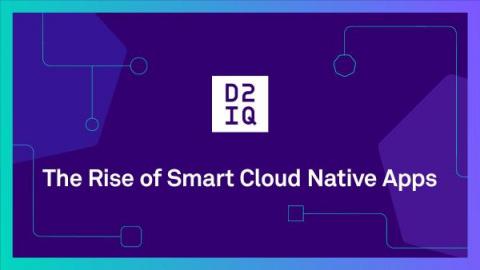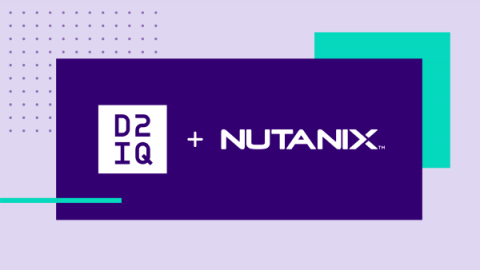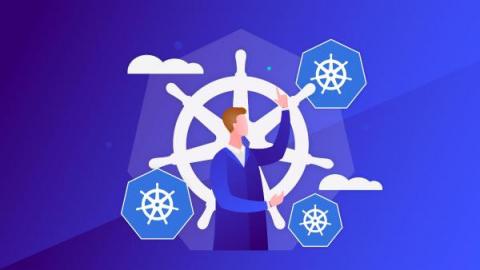Operations | Monitoring | ITSM | DevOps | Cloud
D2IQ
The Rise of Smart Cloud Native Apps
In August 2011, Marc Andreessen wrote an article in The Wall Street Journal entitled “Why Software Is Eating the World.” Andreessen predicted that the leading companies in any industry would be software companies. And indeed, a wave of online software companies arose in which Netflix ate Blockbuster, Apple and Spotify ate Tower Records and the CD, and LinkedIn disrupted the recruiting industry.
7 Steps to Simplify Kubernetes Adoption
Many organizations are adopting Kubernetes to gain agility and increased time-to-value. However, complexity, security, and a shortage of IT skills are the top challenges that prevent organizations from effectively deploying Kubernetes. Complexity Kubernetes requires the selection and integration of a host of component services, which makes do-it-yourself (DIY) deployments beyond the scope of most organizations. Kubernetes management also differs significantly from traditional IT environments.
The Future Is Smart: Cloud Native + AI
Leading organizations around the world are adopting cloud-native technologies to build next-generation products because cloud native gives them the agility that they need to stay ahead of their competition. Although cloud native and Kubernetes are very disruptive technologies, there is another technology that is probably the most disruptive technology of our generation, and that is artificial intelligence (AI) and its subset, machine learning (ML).
D2iQ Joins the Nutanix Ready Partner Program
We are excited to announce that D2iQ and Nutanix have partnered to provide a best-of-breed hybrid cloud solution for customers building cloud-native applications for Day 2 operations. The solution has been validated Nutanix Ready and the companies’ have a collaborative support relationship.
Is Deploying Kubernetes in Air-Gapped Environments Hard? Read How This Security-Conscious Customer Radically Simplified the Deployment Process
Many federal and public sector organizations seek to capitalize on the benefits of a production-grade Kubernetes distribution in their own private data centers, which are often highly restricted and air-gapped environments. However, deploying and operating Kubernetes and other technologies in air-gapped environments is incredibly complex. Teams maintaining Kubernetes in these environments contend with restrictive network access and software supply chain security concerns.
The Need for Speed: Why Fast Data Pipelines Are the Lifeblood of a Business
Today’s businesses are looking for ways to better engage customers, improve operational decision making, and capture new value streams. As the world of data continues to grow and its pace of change accelerates, it’s never been more important for businesses to have fast access to actionable data to serve customers with personalized services, in real-time, and at scale. To do this, they need a fast data pipeline.
Why 87% of AI/ML Projects Never Make It Into Production-And How to Fix It
Going from prototype to production is perilous when it comes to artificial intelligence (AI) and machine learning (ML). However, many organizations struggle moving from a prototype on a single machine to a scalable, production-grade deployment. In fact, research has found that the vast majority—87%—of AI projects never make it into production. And for the few models that are ever deployed, it takes 90 days or more to get there.
Overcoming Kubernetes Infrastructure Challenges at the Edge of the Network
In response to the explosive growth of Internet of Things (IoT) devices, organizations are embracing edge computing systems to better access and understand the enormous amount of data produced by these devices. As the name suggests, edge computing moves some storage and computing resources out of the central data center and closer to where the data is generated at the edge of the network, whether that’s a factory floor, retail store, or automated car.
The Top 6 Challenges Enterprises Face Deploying Kubernetes in Hybrid Cloud Environments
In a relatively short amount of time, Kubernetes has evolved from an internal container orchestration tool at Google to the most important cloud-native technology across the world. Its rise in popularity has made Kubernetes the preferred way to build new software experiences and modernize existing applications at scale in the cloud.











